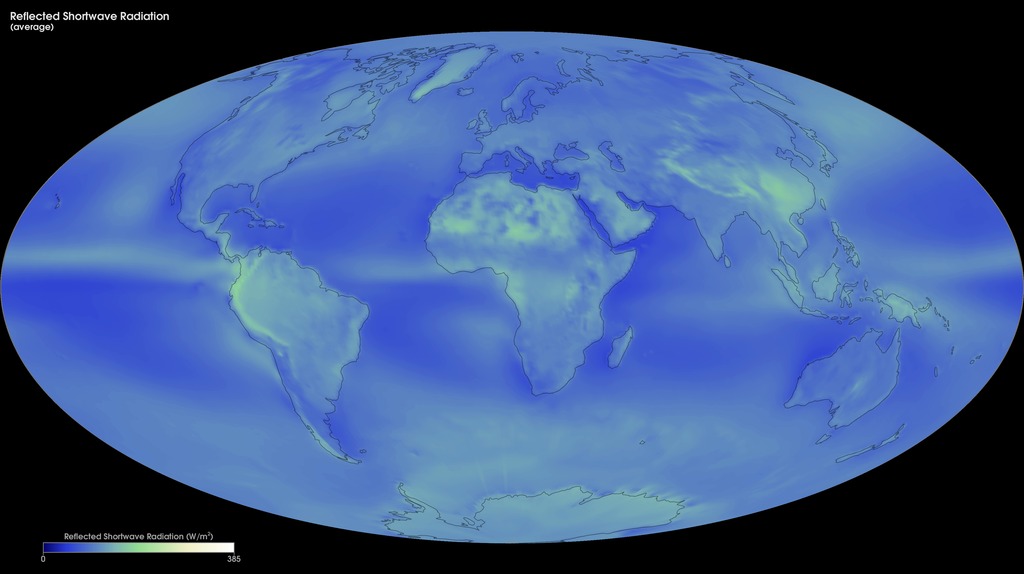CERES Cloud Radiative Effect

CERES Net Cloud Radiative Effect
Clouds exert a big influence on the Earth's climate. Two of the main reasons are that they increase the amount of solar radiation reflected back to space (a cooling effect) and decrease the amount of thermal infrared radiation escaping to space (a warming effect). From a surface observer's perspective the opposite occurs: clouds decrease the amount of sunlight and increase the amount of thermal radiation reaching the surface. We can measure these two cloud radiative influences using satellie instruments such as the Clouds and the Earth's Radiant Energy System, or CERES, satellite.
A simple way to describe the effect of clouds on the Earth's energy budget is the cloud radiative effect, which is the amount of radiative energy that would return to space if there were no clouds, minus the amount that actually escapes with clouds present. For solar radiation this quantity is usually negative (clear skies reflect less sunlight back to space than cloudy ones) while for thermal radiation it is positive (clear skies allow more radiation escape than cloudy ones). The net effect of clouds is the sum of these opposing effects. Current satellite observations indicate that the sum is negative overall, i.e., clouds cool the climate. It is still uncertain whether clouds will cool more or less in a changed climate.

CERES Shortwave Cloud Radiative Effect

CERES Longwave Cloud Radiative Effect
Animation of monthly CERES net cloud radiative effect data.
Animation of monthly longwave cloud radiative effect data.
Animation of monthly shortwave cloud radiative effect data
For More Information
Credits
Please give credit for this item to:
NASA
-
Project support
- Marit Jentoft-Nilsen
- Amy Moran (Global Science and Technology, Inc.)
-
Writer
- Heather Hanson (Global Science and Technology, Inc.)
Release date
This page was originally published on Thursday, June 25, 2015.
This page was last updated on Tuesday, November 14, 2023 at 12:27 AM EST.
Datasets used in this visualization
-
[Terra: CERES]
ID: 114The CERES instrument aboard many Earth-orbiting satellites records the flow of reflected Solar radiation and reprocessed longwave radiation in the Earth's radiation budget.
See all pages that use this dataset -
[Aqua: CERES]
ID: 149The CERES instrument aboard many Earth-orbiting satellites records the flow of reflected Solar radiation and reprocessed longwave radiation in the Earth's radiation budget.
See all pages that use this dataset
Note: While we identify the data sets used in these visualizations, we do not store any further details, nor the data sets themselves on our site.
